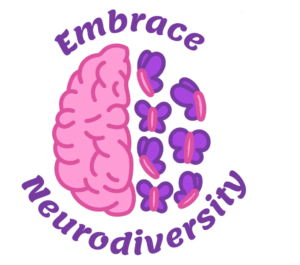Why your workplace could benefit from increased neurodiversity
 Neurodiversity describes how there are a range of differences in how a person’s brain and cognition function, therefore recognising that we are all different in how our brain processes, learns, and behaves. Neurodiversity places people into two groups, i.e. those who are neurotypical and those who are neurodivergent. Neurotypical means the person has typical neurological development or function whereas neurodivergent describes someone who has brain and cognitive function that is not considered ‘typical’. This would include someone who has autism, dyslexia, ADHD and similar medical conditions. Many neurodiverse people are masters in their field with incredible knowledge and passion which radiates as they speak, and yet unfortunately the reality is that the vast majority remain unemployed. Unemployment for neurodivergent adults runs at least as high as 30-40% which is three times the rate for people with disability, and eight times the rate for people without disabilities. A barrier exists between talented individuals and the workplace – perhaps because there is a lack of understanding in how to recruit neurodivergent individuals in a way which empowers their success, or perhaps due to unconscious bias.
Neurodiversity describes how there are a range of differences in how a person’s brain and cognition function, therefore recognising that we are all different in how our brain processes, learns, and behaves. Neurodiversity places people into two groups, i.e. those who are neurotypical and those who are neurodivergent. Neurotypical means the person has typical neurological development or function whereas neurodivergent describes someone who has brain and cognitive function that is not considered ‘typical’. This would include someone who has autism, dyslexia, ADHD and similar medical conditions. Many neurodiverse people are masters in their field with incredible knowledge and passion which radiates as they speak, and yet unfortunately the reality is that the vast majority remain unemployed. Unemployment for neurodivergent adults runs at least as high as 30-40% which is three times the rate for people with disability, and eight times the rate for people without disabilities. A barrier exists between talented individuals and the workplace – perhaps because there is a lack of understanding in how to recruit neurodivergent individuals in a way which empowers their success, or perhaps due to unconscious bias.
Traditionally, employers would consider diversity generally in the context of race, sex, age, religion, or someone’s sexual orientation for instance, but now with greater information available on neurodivergent conditions (such as those above examples), it is equally important to ensure that a neurodiverse workforce is also supported. At HRO it is something we are passionate about supporting our clients to embrace, and in light of Autism Awareness Month in April, I wanted to share a few thoughts on how to be mindful of different minds….
Spectrum of talent being missed out on
Neurodivergent conditions are a part of human diversity with each making the world a more interesting and unique place to be. Neurodiverse people experience the world differently and offer original concepts of shared experiences.
As a spectrum condition, there are a variety of characteristics associated with neurodiversity that can be hugely advantageous to the workplace– take Autism; heightened senses, strong eye for detail, intense concentration, ability to recognize patterns and solve problems, loyalty, strong memory, a literal mindset, logical approach and average to above average intelligence are just a few. In fact, Text Help argues “individuals with Autism tend to be savants in their industry because they’re so passionate and enthusiastic about the things that interest them”.
Neurodiversity is not always obvious and can easily go undetected and undiagnosed. These conditions all exist on a scale; differ from person to person and are not typically visible. Therefore, an employee base may often include more neurodivergent people than HR or leaders will be aware of. Thus neurodiversity-at-work programs can potentially deliver greater inclusion and provide some employees with the opportunity to discover more about themselves and develop new strategies for being more productive and comfortable at work.
Here are some stats you might not have been aware of:
- Worldwide prevalence: 15% to 20% of the population is considered to be neurodiverse.
- Neurodiversity by gender: Men present more neurodiversity than women worldwide and at minor scales as well.
- Special abilities: Research shows that conditions such as autism and dyslexia can bestow special skills in pattern recognition, memory, or mathematics.
- Intelligence: Autism presents higher IQ scores than average.
- Work performance: Studies found that neurodiverse teams are 30% more productive than neurotypical ones and made fewer errors.
Just some of the reasons why employing neurodiverse employees is good for business!
- Contributes to a more inclusive workplace with improved staff confidence and capability
- Makes good business sense for productivity, creativity and innovation
- Managers and leaders become better leaders and managers
- Acknowledge and appreciate that there are a lot of different ways to think, a lot of different ways to learn and a lot of different ways to be
- Often overlooked and misunderstood talent pool
- Autism/neurodiverse inclusive work practices are good practices for all employees
- Increased morale of staff working with neurodiverse team members
- Diversity of employees can lead to a more person-centred management approach
- Stability in your workforce
According to an article in the Harvard Business Review, “Many people with neurological conditions such as autism spectrum disorder and dyslexia have extraordinary skills, including in pattern recognition, memory, and mathematics. Yet they often struggle to fit the profiles sought by employers. ….A growing number of companies, including SAP, Hewlett-Packard Enterprise, and Microsoft, have reformed their HR processes in order to access neurodiverse talent—and are seeing productivity gains, quality improvement, boosts in innovative capabilities, and increased employee engagement as a result“.
The Challenge
Care and support for neurodiverse children is growing within the education system, wit earlier detection and intervention being important factors for development. But there can be little support available for neurodiverse adults in the workplace.
Text Help recent research found that often, neurodiversity and disability inclusion is low in the list of priorities when it comes to diversity and inclusion. When speaking with neurodivergent workers, 64% believed their organization could be doing more to support them; 34% have experienced difficulty in recruitment and interview processes; and, 32% have experienced a lack of career progression. Often, the processes put in place to hire and retain employees do not nurture neurodivergent minds.
Recognised neurodivergent conditions
 Being inclusive of those with neurodivergent conditions, means that it is important to have an awareness of some of the more common conditions. Line managers are not expected to become medical experts, but an employment tribunal would expect a reasonable employer to seek the medical advice and opinion from a medical professional when managing an employee who does have a condition. Some of the more common and recognised neurodivergent conditions include (but this is not an exhaustive list):
Being inclusive of those with neurodivergent conditions, means that it is important to have an awareness of some of the more common conditions. Line managers are not expected to become medical experts, but an employment tribunal would expect a reasonable employer to seek the medical advice and opinion from a medical professional when managing an employee who does have a condition. Some of the more common and recognised neurodivergent conditions include (but this is not an exhaustive list):
- Attention deficit disorder (ADHD) – a neurodevelopmental condition affecting the nervous system leading to episodes of hyperactivity, or the person becoming distracted, or impulse and can lead to difficulties in following instructions and completing tasks.
- Autism – a neurological development condition, characterised by repetitive patterns of behaviour. Often, the person will experience challenges with change, other points of view, social communications.
- Dyslexia – is a learning difficulty which causes problems with reading, writing and spelling.
- Dyspraxia – a learning difficulty which affects coordination, movement, balance and organisation abilities and often includes poor hand eye coordination and spatial awareness.
- Obsessive Compulsive Disorder (OCD) – a mental ill health condition where a person has obsessive thoughts and compulsive behaviours.
- Tourette’s Syndrome – a neurological condition that features involuntary tics and uncontrollable sounds and movements. Those with this condition often experience other conditions such as anxiety.
Managing an employee with a neurodivergent condition
To support and create an equal, diverse and inclusive working environment for neurodiversity, how you manage an employee who has a neurodivergent condition is important. Not only is it the right thing to do morally, but legally it is important that a fair process is implemented to avoid claims of discrimination and/or unfair dismissal.
For example, these are the steps, as a minimum, HRO would recommend all employers take to manage neurodiversity at work:
- Ensure your Equality, Diversity and Inclusion policy includes neurodiversity (get in touch if you would like a sample policy)
- Incorporate neurodiversity into your EDI training
- Where someone has high absence levels arising from their neurodiversity condition, ensure you manage them in line with your normal absence management policies and seek medical advice. Where the condition is likely to be considered a disability, introduce reasonable adjustments so that they are not disadvantaged in the workplace by their condition.
- If you are addressing under performance issues, ensure the process considers the condition and considers whether the underperformance is as a result of it. Medical advice is important in understanding more about the condition, but also whether the condition is likely to be deemed a disability, and therefore, what your legal obligations are. Introduce reasonable adjustments to the role, equipment, or the performance management process itself to ensure fairness and that the person is not disadvantaged and therefore discriminated against.
- Engage with your employee to understand if adopting new workplace equipment or adjustments to support a condition in the workplace. Text Help for example are a great organisation who can provide software to support neurodiversity in computer based roles – some NHS departments have rolled this out to everyone universally to avoid stygma for privately neurodivergent workers.
- Consider using Access to Work, the government support for those who are in work or trying to get into work who have a physical or mental impairment. The process must be started by the employee but once they have done this, as an employer, you can work with the Access to Work contact to seek advice on recommended adjustments and equipment. Employers can also receive a contribution towards the cost of introducing any recommended equipment.
Reasonable Adjustment tips for supporting Neurodiversity in the workplace
Diversity is about recognising that everyone has many great things in common, as well as having many great differences that sets us apart from each other. Inclusion is about ensuring everybody has the same right to equal access to employment, equal pay and access to training and development, as well as not to be discriminated against.
Accepting that not everyone processes information, learns, or behaves in the same way and taking action to embrace it, will positively impact both the business and the individual, for example:
- There could be an employee with autism and who struggles with change. By adapting the way in which change is announced and communicated for this person will improve the chances of them being able to deal with the change and more likely to accept and understand.
- You could have an employee who is under performing in their role and it is attributed to dyslexia. By making adaptations to the role and/or equipment /software that they use, you can overturn the underperformance and enable them to perform their role to the required standards.
- You may also have an employee who is impulsive, hyperactive and becomes easily distracted arising out of their ADHD disorder. You can support these characteristics by adapting how their breaks are taken or take steps to simplify the way in which they do their work or provide written processes for them to follow and keep focused. With a tendency to be hypersensitive, too many distractions can cause overstimulation. Provide quiet zones or noise canceling headphones to aid a calm environment. These are all measures that will support their neurodivergent and help them in achieving in the workplace.
- You could have a job applicant with autism who is an excellent fit for the role of bringing a wealth of knowledge and novel ideas to the job, but may struggle to communicate during the interview process. Begin by rethinking what skills are truly important for the job advert for the role, then consider ditching traditional interviews and instead offer work trials or tasks which enable potential employees the chance to demonstrate their skills. If not possible to make reasonable adjustments to aid the interview process, give the candidate the questions in advance so they have some time to process and prepare, perhaps allow an extra little bit of time for their response.
- Finally, it can often be difficult for someone with neurodiversity to express their feelings, especially if they don’t know who to turn to. Provide a support network with a dedicated ‘buddy’ and schedule weekly one to one check ins.
These examples illustrate that by taking appropriate steps in supporting neurodiversity in the workplace, it can lead to positive and beneficial results not only to the employee but ultimately for the business.
Legal Considerations
In some instances, the nature of the condition can qualify as a disability for the purpose of the Equality Act 2010. Under this legislation, a person has a disability if “they have a physical or mental impairment, and the impairment has a substantial and long term adverse effect on their ability to carry out normal day to day activities”.
The highlighted words above are important as it are these words that help us reach a view as to whether it is likely to be a disability i.e. this is what a tribunal judge will be ruling on, for example:
- First of all, is the medical condition either physical or mental?
- Secondly, how substantial are the effects of the condition on the person. It must be more than a minor effect and that it makes it more difficult for somebody to do something because of it.
- Thirdly, how long term is the health condition likely to be. Under the legislation, the requirement is that the condition must have affected/or likely affect the person for at least a year. Even if somebody has period lasting a few months of not having been affected by their health, it could still be deemed a disability especially if it can happen again and has a substantial affect.
 For an employer to understand its legal obligations under the Equality Act 2010 seeking advice and guidance from a medical professional, which could be for example a GP, Consultant, Treating Specialist, is necessary. Some EAPs such as via Health Assured offer extended services for OH referral if you do not have a separate OH plan.
For an employer to understand its legal obligations under the Equality Act 2010 seeking advice and guidance from a medical professional, which could be for example a GP, Consultant, Treating Specialist, is necessary. Some EAPs such as via Health Assured offer extended services for OH referral if you do not have a separate OH plan.
If an employer concludes that the condition is likely to be deemed a disability, then it means that person is protected from discrimination and from unfair treatment because of it. It would also place a legal obligation on the employer to put in place reasonable adjustments to support the employee in managing their condition in the workplace.
Failing to implement reasonable adjustments, or discrimination on the grounds of their medical condition risk employment tribunal claims, for which the aware for discrimination is uncapped.
Summary
With DE&I (Diversity, Equity, and Inclusion) being a strategic priority for HR, the inclusion of neurodivergent employees is often overlooked. Despite being highly skilled, educated, and motivated, they are noticeably underrepresented in the workplace. By understanding and embracing neurodiversity, recognising and emphasising each person’s strengths and talents while providing support for their differences and needs in the workplace, employers can improve inclusivity for all and expand their workforce in support of their DE&I programs.
With the war on talent and the currently recognised ‘Great Resignation’ resulting in the hiring landscape being candidate-led, employers who embrace accommodating the needs of neurodivergent individuals, can have access to a large, untapped pool of highly valuable talent.
Supporting Resources
If you would like to find out more about how you could embrace neurodiversity in the workplace, check out the following resources:
- Neurodiversity Hub: Changing the narrative about autism and neurodiversity through awareness, education and engagement.
- Neurodiversity celebration Week: Resources
- Exceptional Individuals: Resources
- Text Help: ‘Unlocking Neurodiversity in the workplace’
- Neurodiversity Hub: Employer script and employer presentation engagement resources to help share knowledge of the strengths neurodiverse employees.
- 15 minute training modules: (1) Interviewing an autistic jobseeker (2) Autism & Employment (3) Managing an autistic employee (4) Autism & Mental Health at work
Useful apps
These are just suggestions there will be others that work just as well and may suit your needs better.
- Anti-Social Set the app for your chosen time frame and it will block distracting social media websites.
- Read&Write is a literacy support tool that offers help with everyday tasks like reading text out loud, understanding unfamiliar words, researching assignments and proofing written work.
- ClaroRead helps individuals to be more confident, independent and productive learners by providing an effective suite of reading, writing and study tools.
- SelfControl This will block access to the websites that distract you the most for a set period that you determine. Until the timer expires, you will be unable to access those
sites—even if you restart your computer or delete the application. - Write or Die Set your time period, word goal, and preferred “punishment” should you stop typing. Once the setup is complete, you’ll need to type fairly continuously; otherwise, there will be consequences which you also choose. Gentle Mode: A certain amount of time after you stop writing, a box will pop up, gently reminding you to continue writing. Normal Mode: If you persistently avoid writing, you will be played a most unpleasant sound. The sound will stop if and only if you continue to write. Kamikaze Mode: You will need to keep writing or your work will start to unwrite itself.
- StayFocusd This is a free Chrome extension that will help you to stay more focused on your writing by restricting the amount of time you spend on distracting websites. You
set a certain amount of time for social media for a day, after you have used your allotted time you will be blocked for the rest of the day. - Freedom – app to block internet, messages and social media leaving you free to focus on your work
Categories
- Coaching (9)
- CSR (1)
- Culture (1)
- Culture & Engagement (33)
- Diversity and Inclusion (16)
- Employment law (38)
- Inspiration (12)
- Leadership (14)
- Learning & Development (7)
- Recruitment (12)
- Reward (9)
- Self-development (2)
- Tips & tricks (11)
- Uncategorized (18)
- Welfare and Wellbeing (26)

